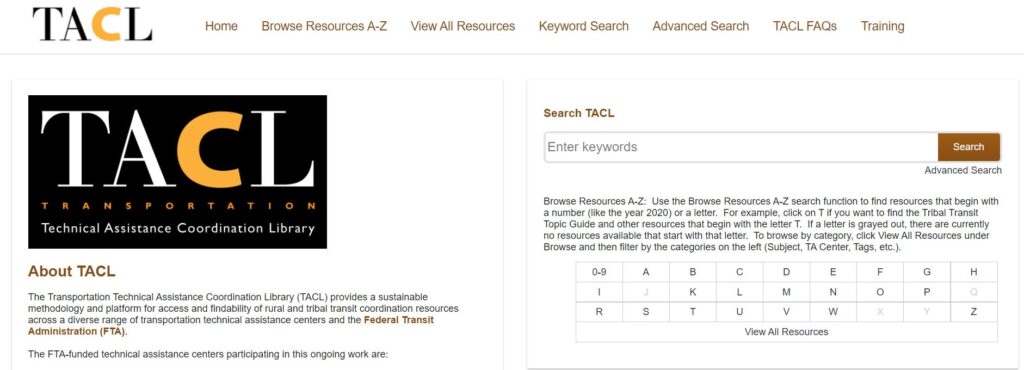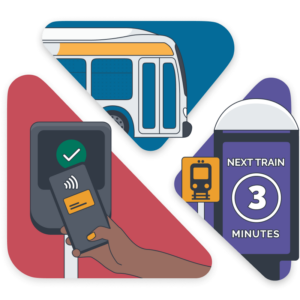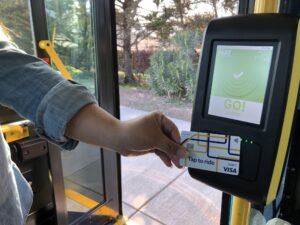Open Payments and Transportation Resources: An MIC Quarterly Meeting Recap
By Shared-Use Mobility Center
May 19, 2023
Revised March 2025
Introduction
The Mobility Innovation Collaborative (MIC) is a Shared-Use Mobility Center (SUMC) program run in partnership with the Federal Transit Administration (FTA) to provide technical assistance to nearly 50 FTA grantees and share lessons learned from innovative projects from around the country. Each quarter, the MIC team organizes a meeting to explore in-depth issues related to mobility trends and the FTA mobility pilot needs. During the MIC Quarterly Meeting in April 2023, SUMC highlighted the National Rural Transit Assistance Program (NRTAP) Coordination Library and The California Integrated Travel Project (Cal-ITP). Speakers included:
- Cara Marcus, National RTAP
- Lilly Shoup, Rebel
- Hunter Owens, Cal-ITP
About The Presenters
National Rural Transportation Program
National Rural Transportation Program (RTAP) is a program of the Federal Transit Administration dedicated to addressing the training and technical assistance needs of rural and tribal transit agencies and State RTAPs. Cara Marcus, the Knowledge and Resource Manager at National RTAP, shared an overview of the Transportation Technical Assistance Coordination Library (TACL), an online clearinghouse of rural and tribal transit coordination resources curated by FTA-funded technical assistance centers. These include National Aging and Disability Transportation Center (NADTC), National Center for Applied Transit Technology (N-CATT), National Center for Mobility Management (NCMM), National Rural Transit Assistance Program (National RTAP), Shared-Use Mobility Center (SUMC), and the Transit Workforce Center (TWC). TACL, which was created in an effort to improve interagency resource coordination, houses accessible, 508-compliant case studies, technical briefs, toolkits, webinars on mobility topics related to funding, accessibility, partnerships, technology, data sharing, and more.

Cal-ITP
Caltrans and CalSTA are co-operators of the California Integrated Travel Project (Cal-ITP), a state initiative designed to integrate transit in California with fare payment systems, real-time data standards, and seamless verification of eligibility for transit discounts. The Cal-ITP program aims to make travel seamless and cost-effective by helping transit agencies standardize real-time travel information for easy trip planning, automate fare discounts through a simple, digitized, statewide verification process, and enable contactless fare payments by introducing new ticketing systems.

Hunter Owens, Research Data Manager at Caltrans, and Lily Shoup, Managing Director at Rebel, offered an overview of the benefits associated with each of the three Cal-ITP project pillars: mobility service data, contactless open payments, and automating transit discounts. Currently, the Cal-ITP program is working with Monterey-Salinas Transit, Sacramento Regional Transit (SacRT), Santa Barbara County Association of Governments, and LAX FlyAway to pilot four demonstration projects that are taking these concepts and putting them into practice.
Key Takeaways
FTA Technical Assistance Centers provide a wide range of information and knowledge with grantee agencies and the broader public.
TA centers and FTA contribute to TACL as a means of providing information on best practices, pilots, policies, and other developments. SUMC is a contributor to TACL; in many of its pieces shared on TACL, SUMC highlights pilots from existing MIC grantees through case studies and other resources housed on the Mobility Learning Center. Visitors to TACL can access resources from the FTA, and the participating TA centers to find information to help in their research and planning initiatives. TACL helps visitors find a wide array of information from the perspective and focus areas of different technical assistance centers, including shared mobility, mobility management, disabilities and accessibility, and workforce issues.
Transit agencies have new, freely available, resources that can positively impact how they offer mobility services to their communities.
While Cal-ITP is focused on integrating transit services in California, its resources can be adapted to anywhere across the United States. Cal-ITP hosts a Mobility Marketplace where it lists its existing contracts and Master Service Agreements (MSA’s) it has negotiated with different vendors related to payment processing. Notably, Coast RTA in South Carolina was able to implement a new open-loop fare payment system using contracts negotiated through Cal-ITP.
Open payments, also known as contactless payments, in public transit allows users to access the transit system as conveniently as they do other services.

Over the years, transit agencies have moved away from cash payments and adopted new payment systems that handle fare methods that don’t require riders to have cash. However, these contactless payment methods tend to operate within closed-loop payment systems, which are incompatible with other forms of payment. In other words, while farecards may make it easier for some riders to board transit, the funds loaded onto these cards cannot be used for other purchases outside of transit and therefore have no value for other transactions. Recently, some transit systems have introduced open payments, where passengers can pay their fares directly at the farebox using a debit card, credit card, or smartphone. The state of California is expanding the availability of open payments through Cal-ITP. Allowing customers to use their existing bank cards or smart devices to pay for transit improves customer access and experience, and lowers costs for riders and providers.
At a high level, Cal-ITP is looking to design a transit ecosystem that is interoperable for payment and data sharing.
The contracts or MSAs listed on Cal-ITP’s Mobility Marketplace site are examples of a “state purchasing schedule”, which are agreements between the state or related entities and vendors. Most of these contracts can be used by transit agencies located outside of California and all contracts are designed to be flexible and have service-level agreements that an agency can negotiate. If a hardware vendor a transit agency initially partners with isn’t working out, they can change that vendor without changing their whole payment integration system. Additionally, Cal-ITP is helping transit agencies improve the flow of data and information sharing to their riders by providing technical assistance to transit agencies and developing the California Minimum GTFS Guidelines.
Conclusion
In this quarterly meeting, SUMC offered participants insights on new tools, ideas, and resources that support mobility innovation. As a clearinghouse on rural and tribal transit coordination resources, TACL extends the information freely available to MIC grantee agencies and the broader community looking to test and implement or research innovative mobility programs. For agencies looking to procure new payment and data systems, Cal-ITP has contracts and Master Service Agreements that agencies anywhere can refer to and adapt. The Mobility Innovation Collaborative strives to demonstrate that this work does not occur in a vacuum. Communities and agencies across the country are producing knowledge and information that is adaptable to the mobility work across the industry.